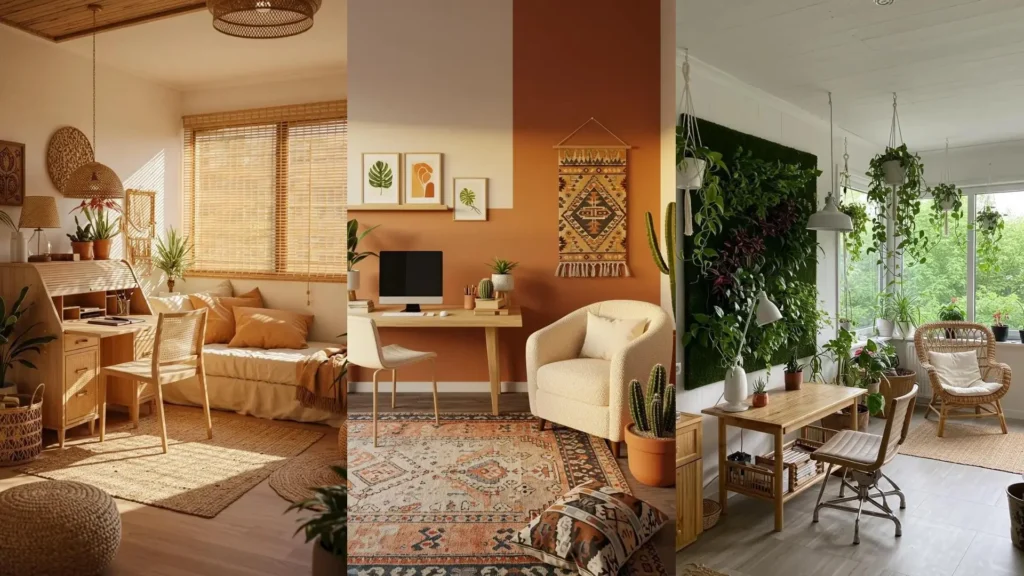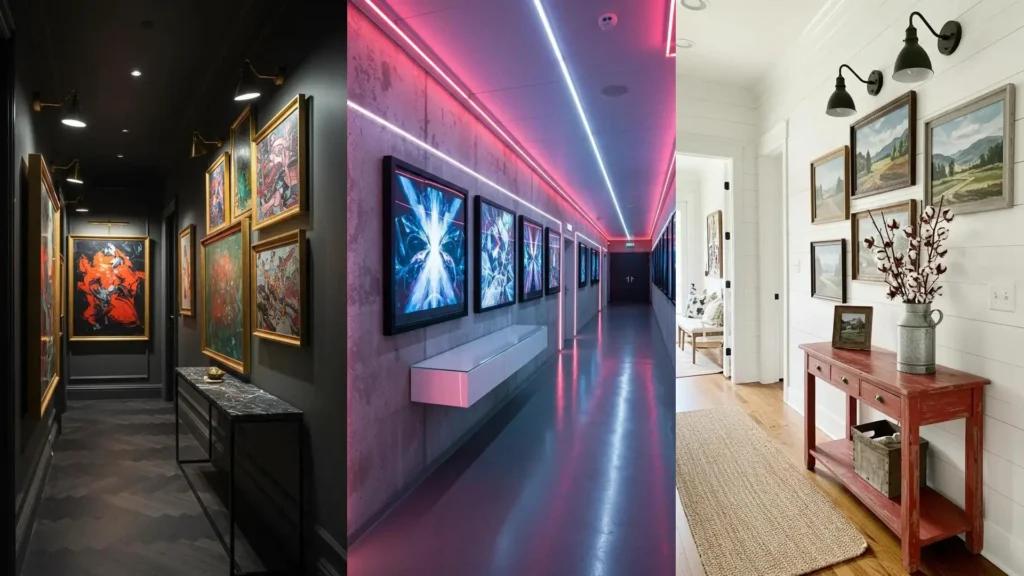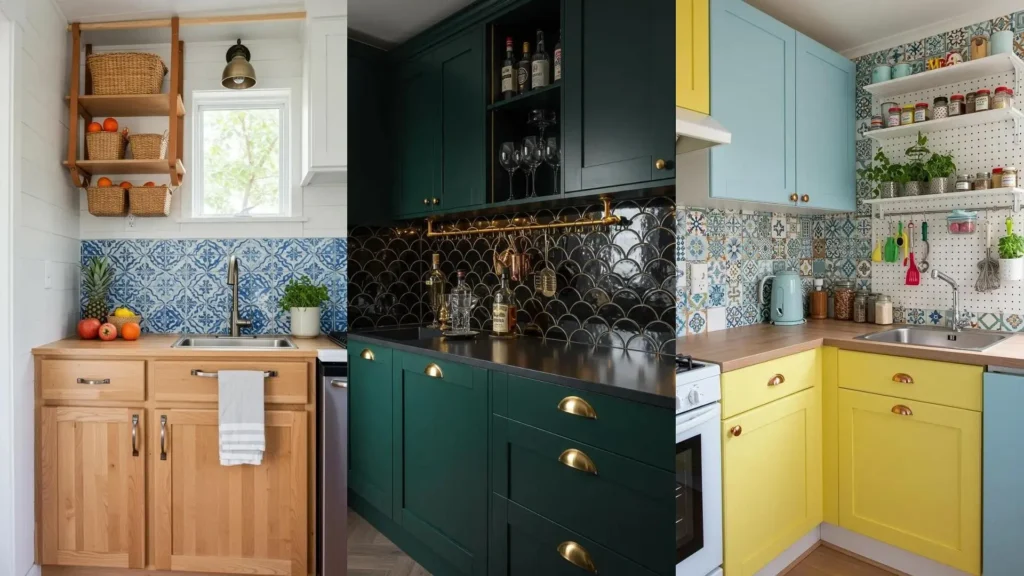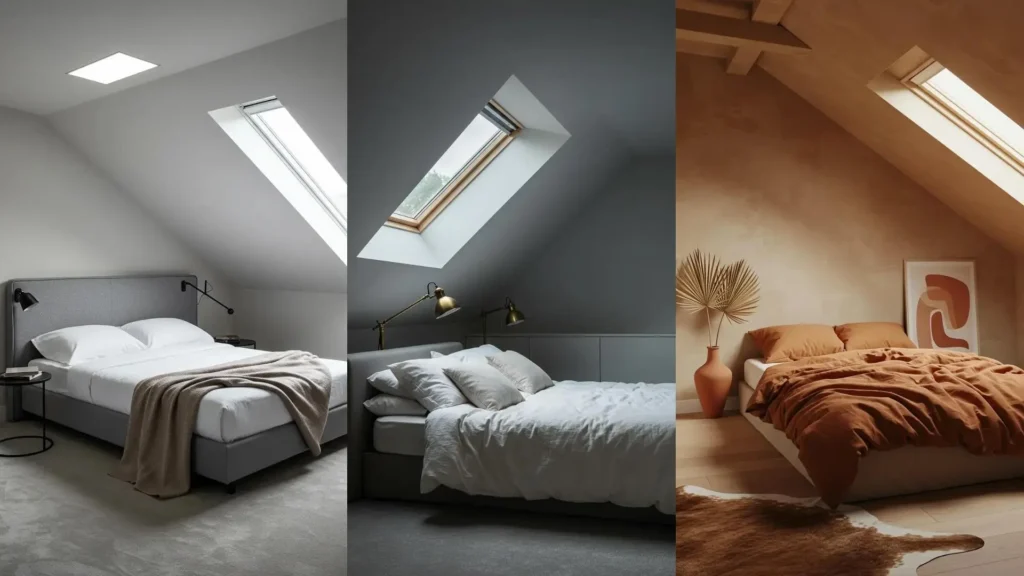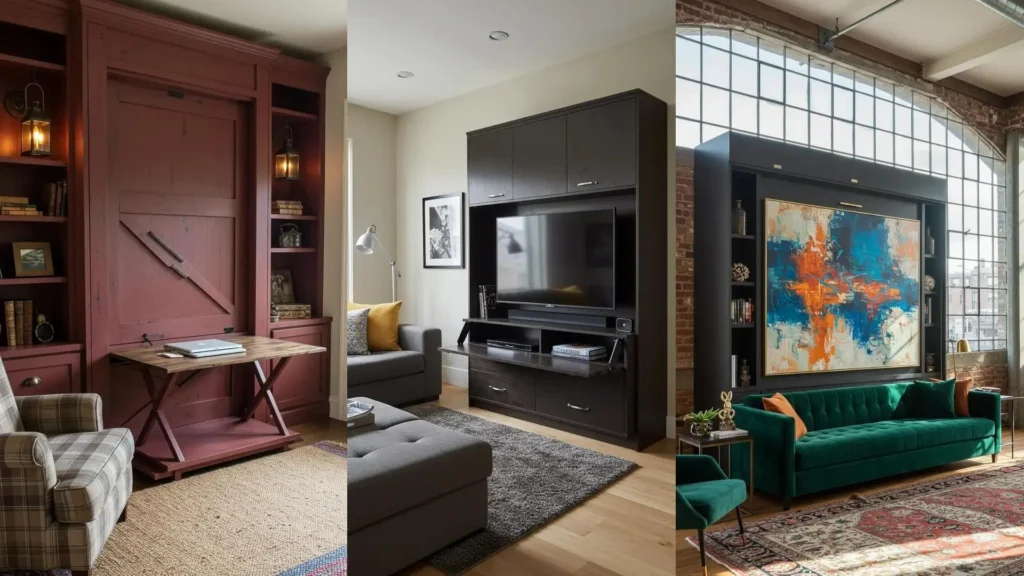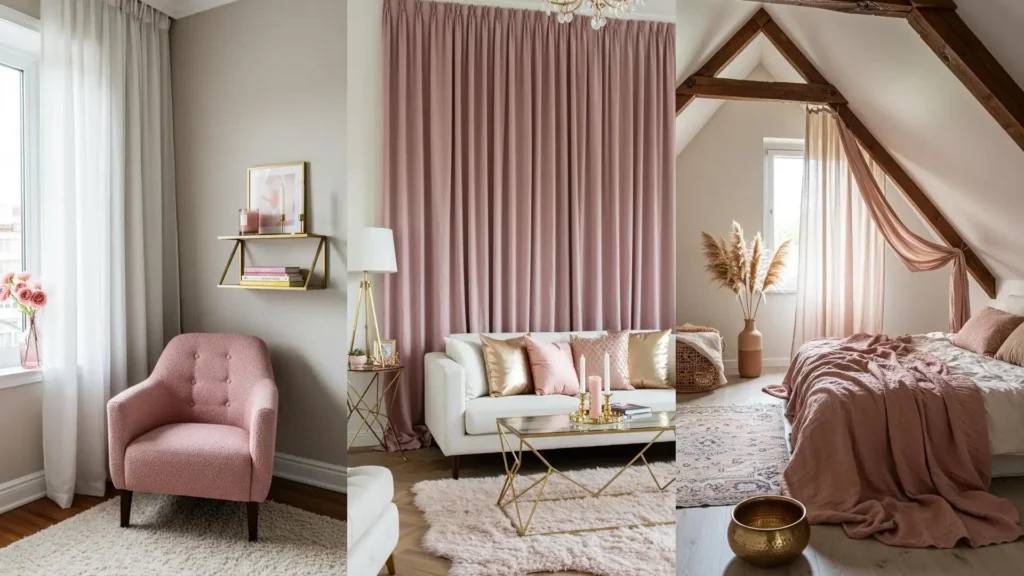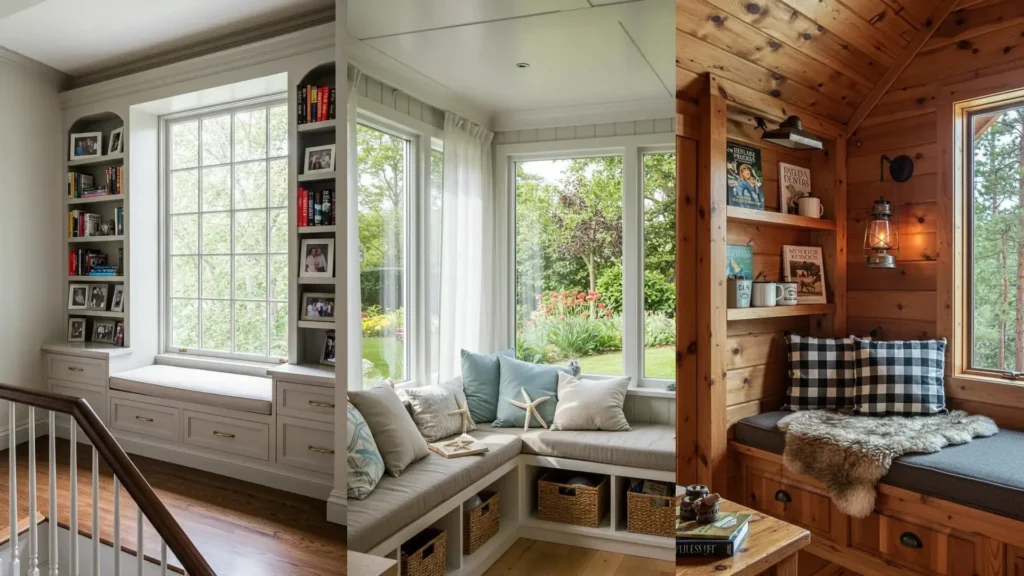Creating a room that serves as both a productive office and a serene lounge can feel like an impossible puzzle.
You need focus during the day, but you crave a space to unwind in the evening, free from the visual weight of your work.
The solution isn’t about hiding everything, but about making deliberate choices in furniture, layout, and materials that allow for a graceful transition.
Here, we’ll explore how to design a multipurpose room that feels whole, elegant, and perfectly attuned to your needs—no matter the time of day.
1. The Floating Desk: Define a Zone Without Losing Floor Space

Mount a slim desk and shelving unit directly to the wall to create a dedicated workspace that doesn’t feel heavy or intrusive.
This technique frees up floor space, making the room feel larger and more open, which is crucial for a successful multi-use area.
Define the zone further with a calming accent wall color; a soft blue or gray creates a mental separation between work and relaxation.
For a more integrated look, paint the shelving the same color as the wall it’s mounted on, allowing it to blend in seamlessly.
2. The Disappearing Office: Hide Your Workspace in Plain Sight
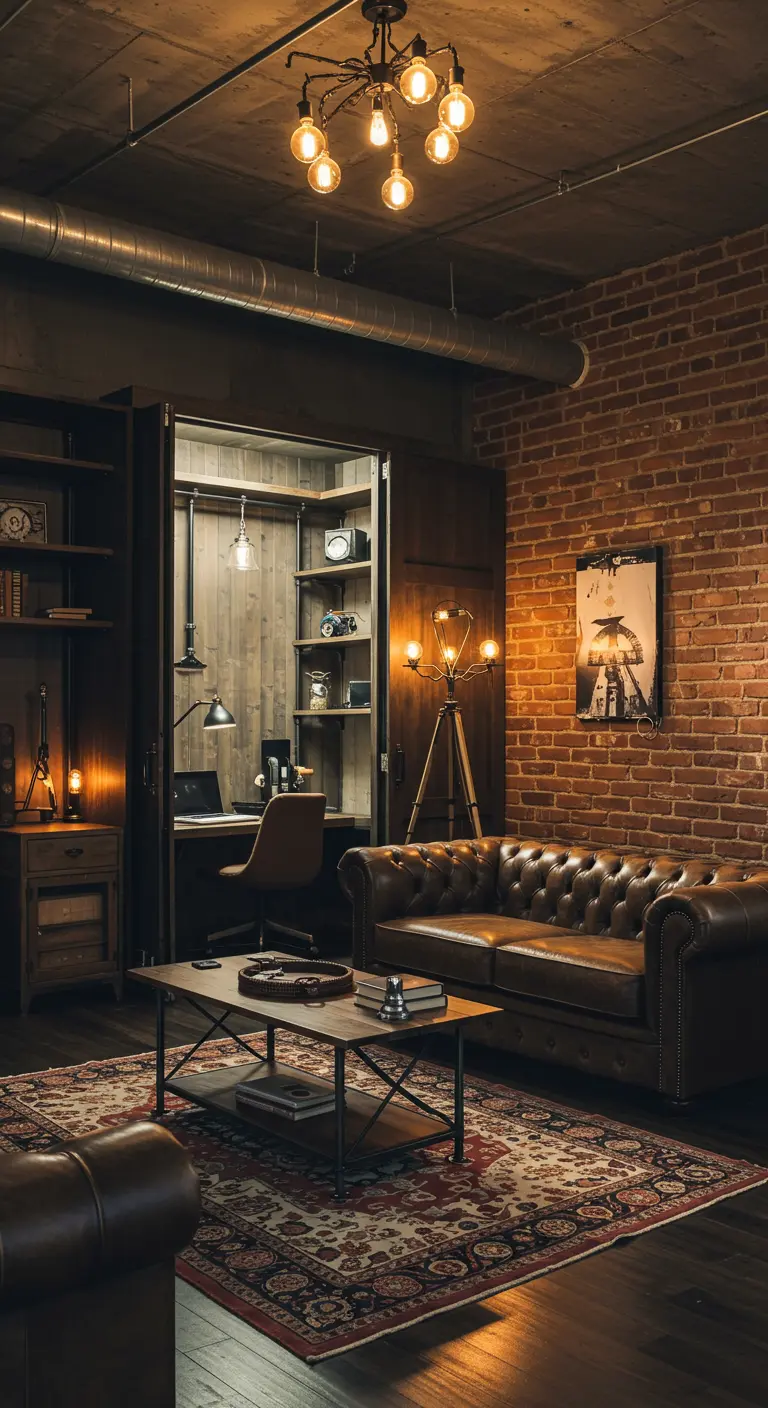
Transform a large armoire or cabinet into a fully contained office nook, complete with shelving, lighting, and a desk surface.
This is the ultimate solution for transitioning a space: simply close the doors at the end of the day, and all signs of work vanish instantly.
The key is choosing a piece of furniture that complements your lounge decor, like this dark wood cabinet that adds to the room’s moody, industrial character.
Install simple LED strip lighting inside the cabinet to ensure the workspace is bright and functional without needing a bulky desk lamp.
3. Unify with Texture: The Cohesive Boho Workspace
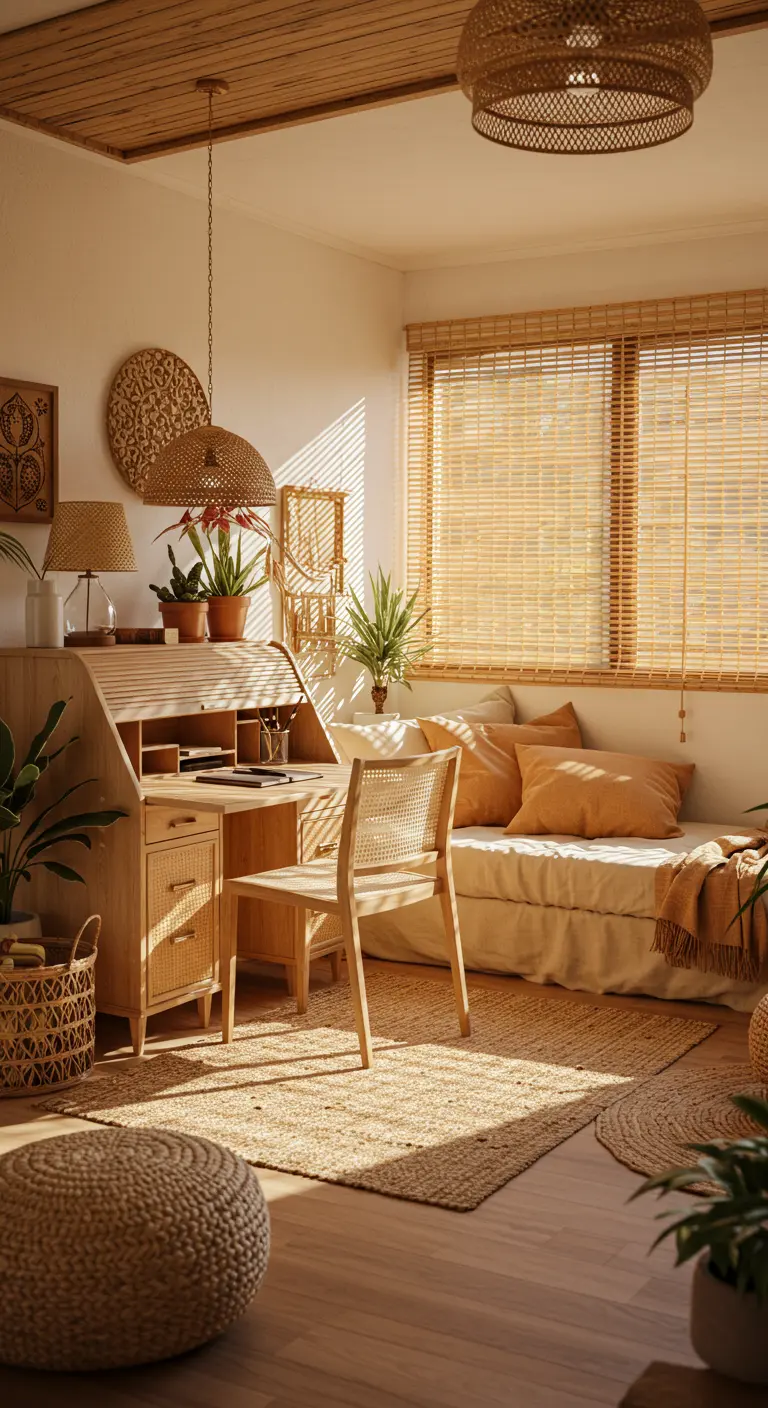
Select a desk that feels like a beautiful piece of furniture in its own right, such as a vintage roll-top or a warm-toned wood secretary desk.
Unify your work and lounge zones by repeating natural textures throughout the space.
Here, the rattan chair, woven pendants, bamboo blinds, and jute rug create a harmonious, sun-drenched feel that connects the desk area to the daybed.
This approach makes the desk feel intentional and decorative, rather than purely functional. Look for pieces from boho-chic interiors for inspiration.
4. The Console as a Creative Workstation
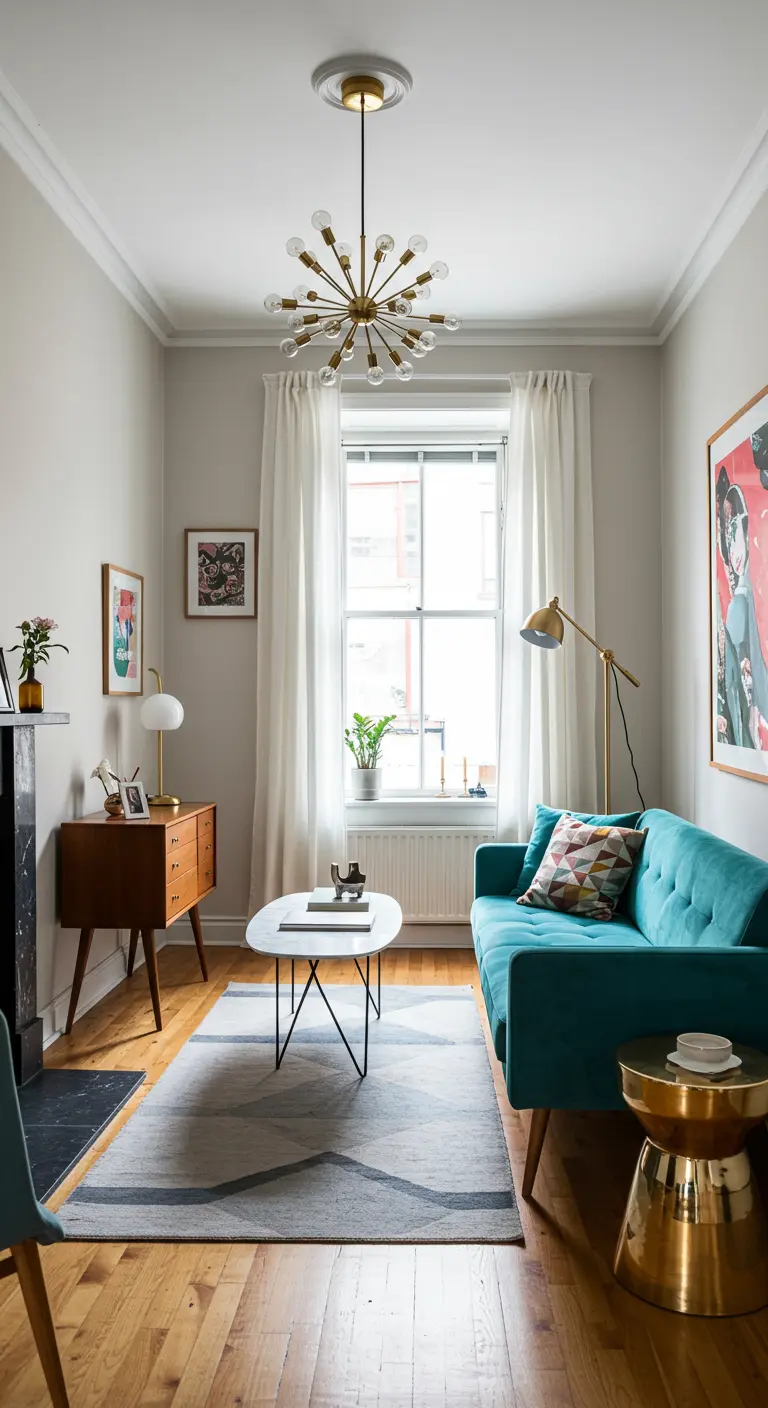
If you don’t need a full-time desk, consider using an elegant console table as a light-duty workstation.
Its slim profile won’t dominate the room, and it easily reverts to a decorative surface for a lamp, books, or art when not in use.
Pair it with a statement piece like a sculptural brass floor lamp or a bold piece of art to draw attention away from its function as a desk.
The key is to choose a console that matches your living room’s aesthetic, like this mid-century modern piece, so it always feels integrated.
5. Soft Separation with Translucent Dividers
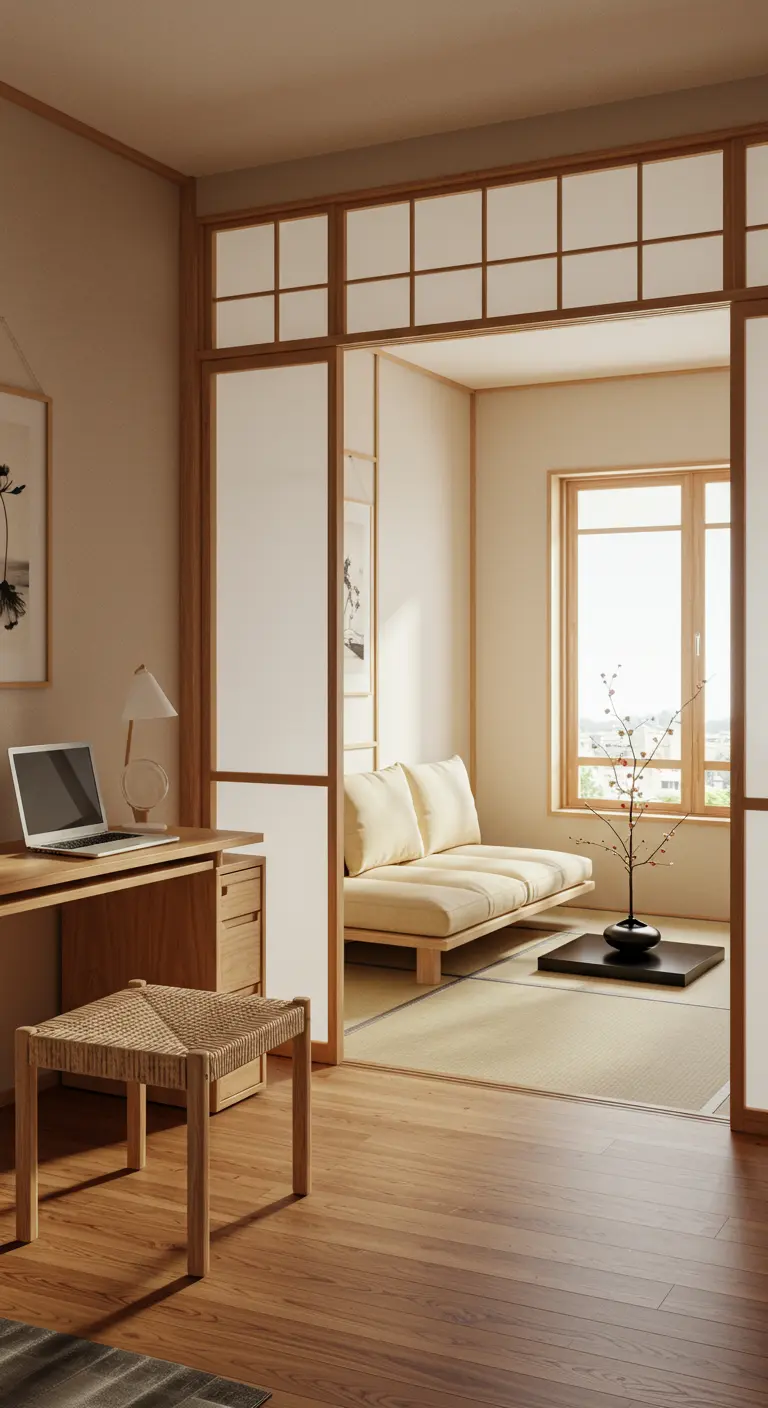
Use sliding shoji-style screens to create a distinct office zone without sacrificing natural light or an open feel.
The translucent panels obscure the direct view of the workspace, providing a gentle visual barrier that promotes calm in the adjoining lounge area.
This Japandi-inspired approach is perfect for maintaining a serene, uncluttered atmosphere throughout the entire room.
When you’re not working, you can slide the panels open completely to merge the two spaces into one larger, more fluid area.
6. Elevate with Glamorous Finishes

Choose a desk made from materials typically found in a living room, not an office, to create a seamless blend.
A mirrored desk reflects light and its surroundings, making it feel less solid and visually lighter in the space.
Pair it with other glamorous textures like a velvet channel-tufted sofa, brass accents, and a crystal chandelier to create a cohesive and luxurious atmosphere.
This strategy ensures your workspace elevates the room’s overall design rather than detracting from it.
7. Artful Disguise: The Desk That Becomes Wall Decor
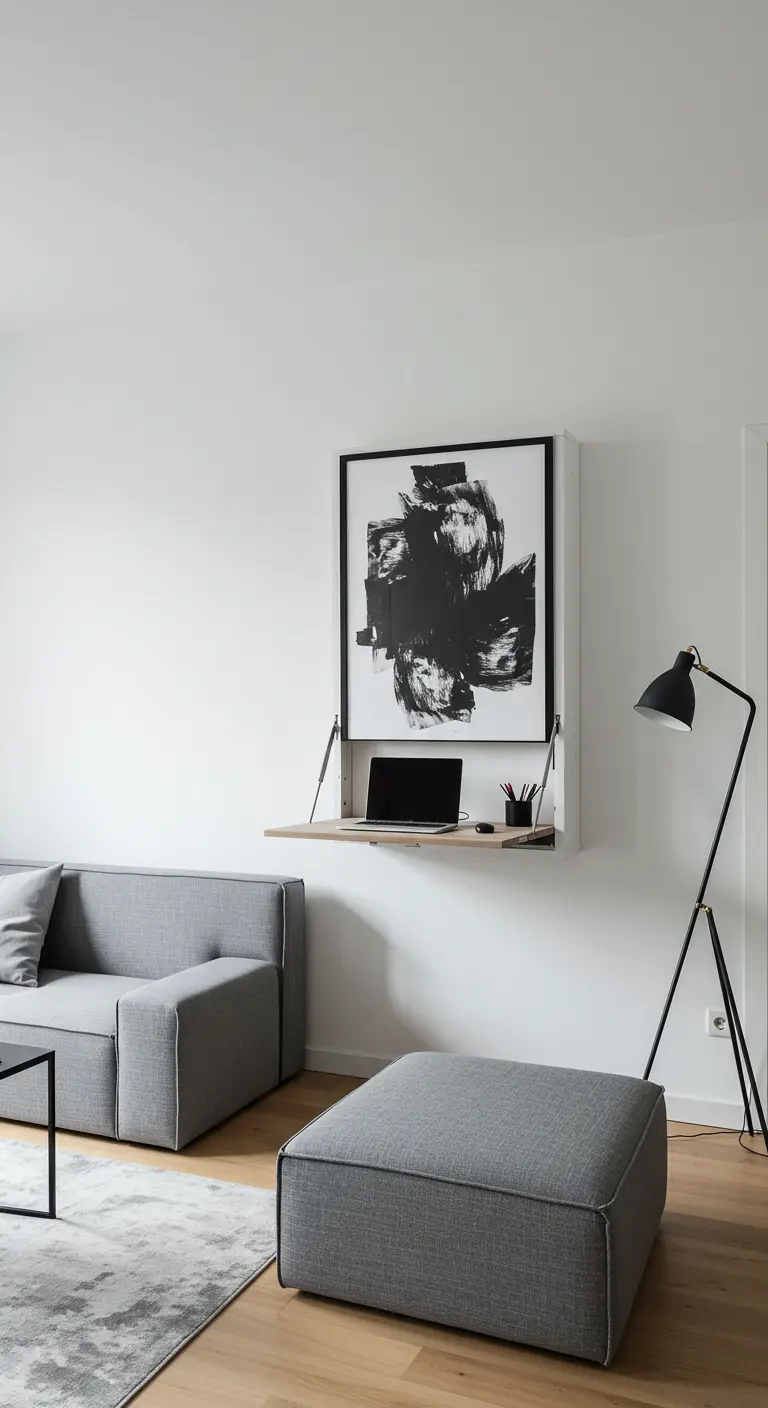
For the ultimate space-saving solution, opt for a wall-mounted, fold-down desk that doubles as a piece of art.
When closed, it presents a clean, minimalist facade that integrates perfectly into a modern living room.
When open, it provides a compact but sufficient surface for a laptop and essentials, instantly creating a workspace.
This is one of the most effective examples of flexible furniture layouts for multipurpose rooms.
8. Embrace Personality with Color and Collections
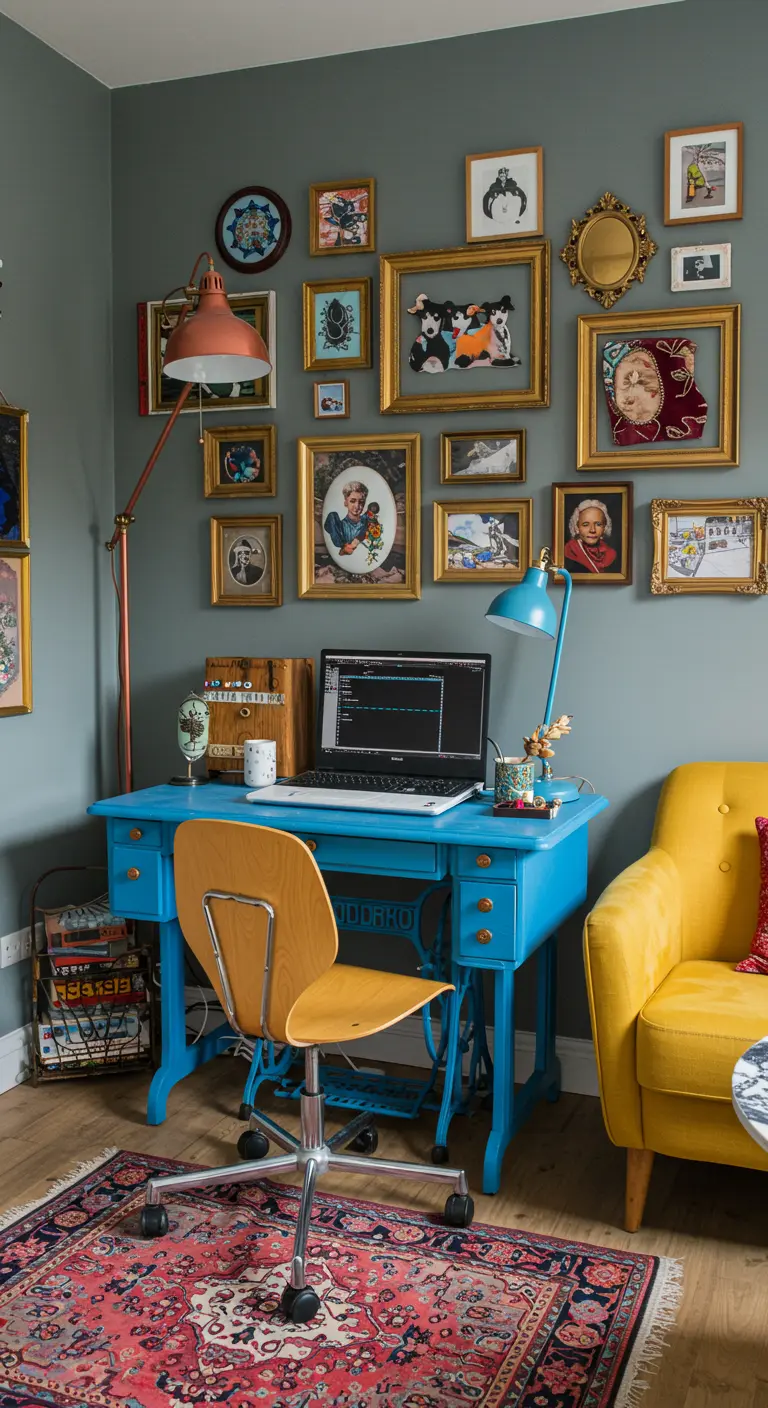
Instead of hiding your workspace, make it a vibrant, personal corner that contributes to the room’s character.
Paint a vintage desk a bold, joyful color and surround it with an eclectic gallery wall of art and objects you love.
The key is to create a visual link between the work zone and the rest of the room, perhaps by pulling a color from the desk into a cushion or another accessory.
This approach makes the desk feel like a curated, intentional part of your home’s story, not just a place for tasks.
9. The Classic Library: Unifying Work and Comfort
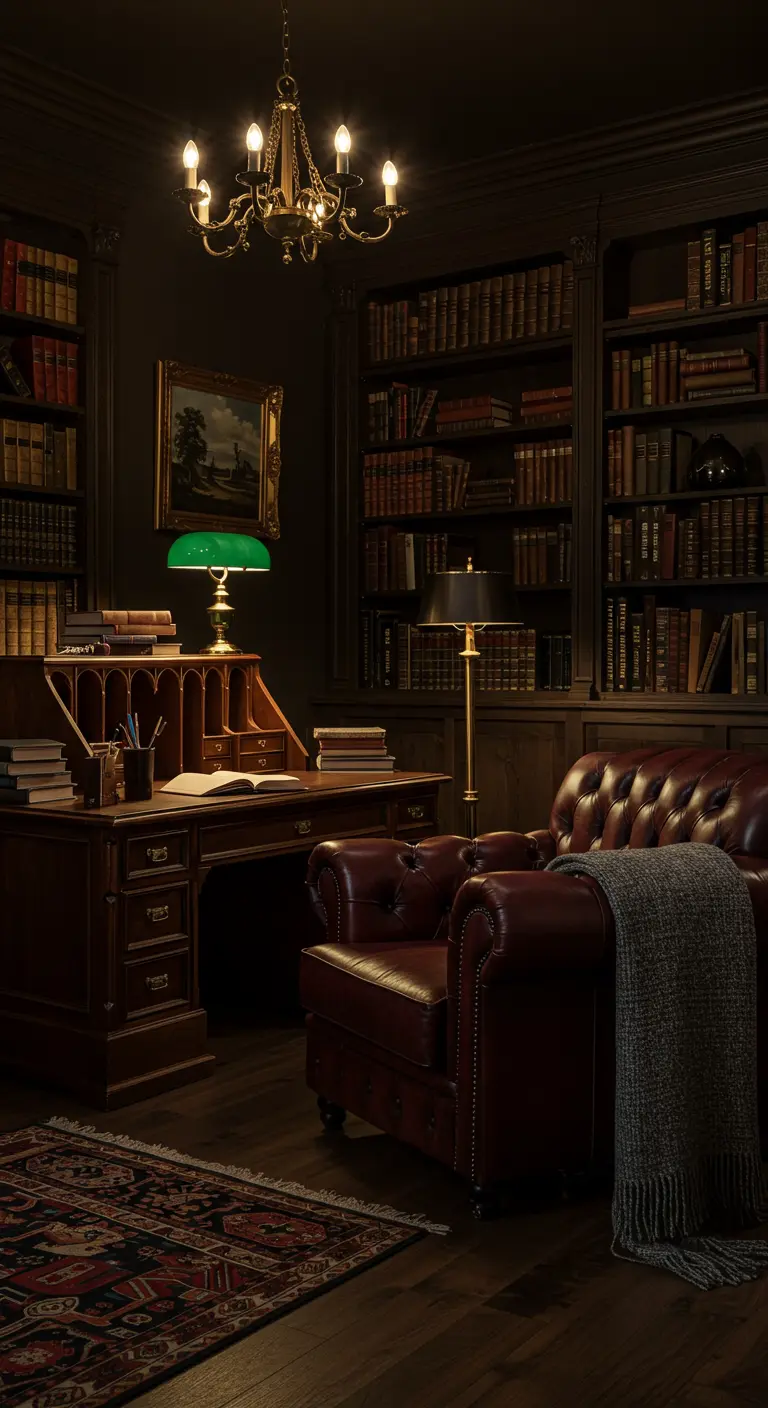
Create a sophisticated, cohesive feel by designing your space as a traditional library or study where work and relaxation naturally coexist.
Use dark wood built-in bookshelves to wrap the room, which provides ample storage and creates a warm, enveloping atmosphere.
A stately desk and a comfortable leather armchair don’t feel like separate entities; they are part of a single, unified design concept.
Warm lighting from classic fixtures, like a banker’s lamp and a brass chandelier, is essential to achieve this timeless look.
10. The Coastal Approach: Work from the Coffee Table
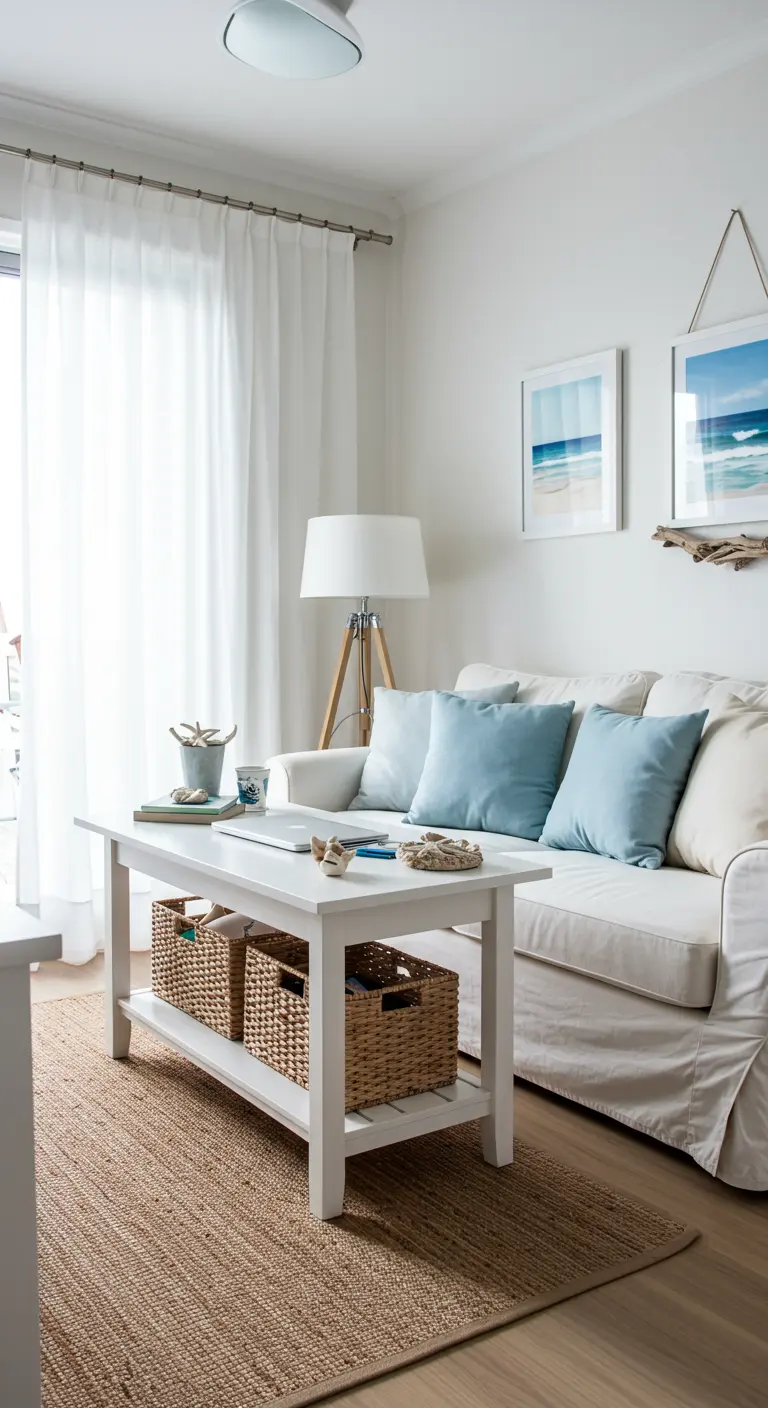
For a relaxed, informal setup, make your coffee table the center of your work-life hub.
Choose a large, sturdy coffee table with a lower shelf for storing your laptop, notebooks, and other work items when not in use.
This keeps your primary seating area clutter-free and ready for relaxation at a moment’s notice.
Maintain a light and airy feel with a coastal-inspired palette—white slipcovers, natural fiber rugs, and soft blue accents—to ensure the space always feels like a retreat.
11. The Lift-Top Table: Functionality on Demand

A lift-top coffee table is a game-changer for multipurpose living rooms, offering an ergonomic workspace without a separate desk.
It rises to a comfortable height for working from the sofa and reveals hidden storage for your laptop and office supplies.
When lowered, it functions as a standard coffee table, leaving no trace of your workday behind.
This piece of furniture is ideal for maintaining a clean, contemporary aesthetic while maximizing the utility of your space.
12. Create Drama and Division with Curtains

Use heavy, floor-to-ceiling curtains to create a dramatic backdrop that also serves to conceal a workspace or alcove.
During the day, the curtains can be drawn back to reveal the desk. In the evening, pulling them closed creates an elegant, textured wall that enhances the room’s lounge-like feel.
The strong color contrast here—deep navy velvet against dusty rose walls—adds a layer of sophistication and visual interest.
This technique is especially effective for zoning layouts in studio apartments or open-plan homes.
13. The Rustic Office: Materials That Bridge Two Worlds
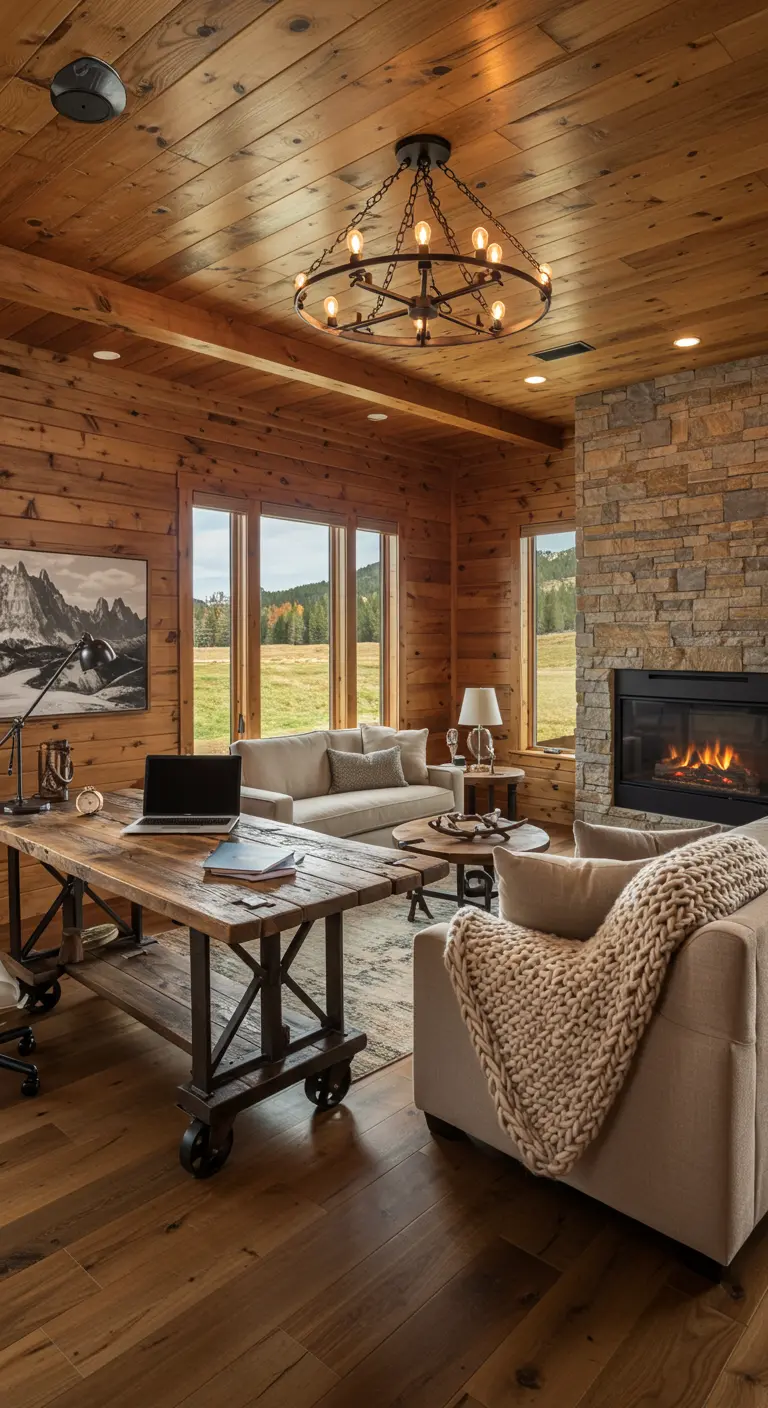
In a rustic setting, blend your office and lounge areas by using consistent, robust materials throughout.
A substantial wooden desk with industrial-style casters doesn’t feel out of place next to a stone fireplace and wood-paneled walls.
The key is that the desk feels as solid and thoughtfully chosen as the seating and architectural elements.
Cozy textiles, like a chunky knit throw, soften the harder materials and unify the entire modern rustic space for both work and relaxation.
14. Light and Airy: The Invisible Workstation

Make your work area feel almost invisible by choosing transparent or lightweight furniture in a minimalist color palette.
Here, clear acrylic ‘ghost’ chairs and a simple white pedestal table blend into the background, allowing the eye to travel through the space uninterrupted.
This strategy is highly effective in smaller rooms, as it prevents the dining or work area from visually crowding the lounge zone.
The space remains bright, open, and defined by its more substantial pieces, like the lounge chair and arc lamp.
15. Embrace Maximalism: More is More
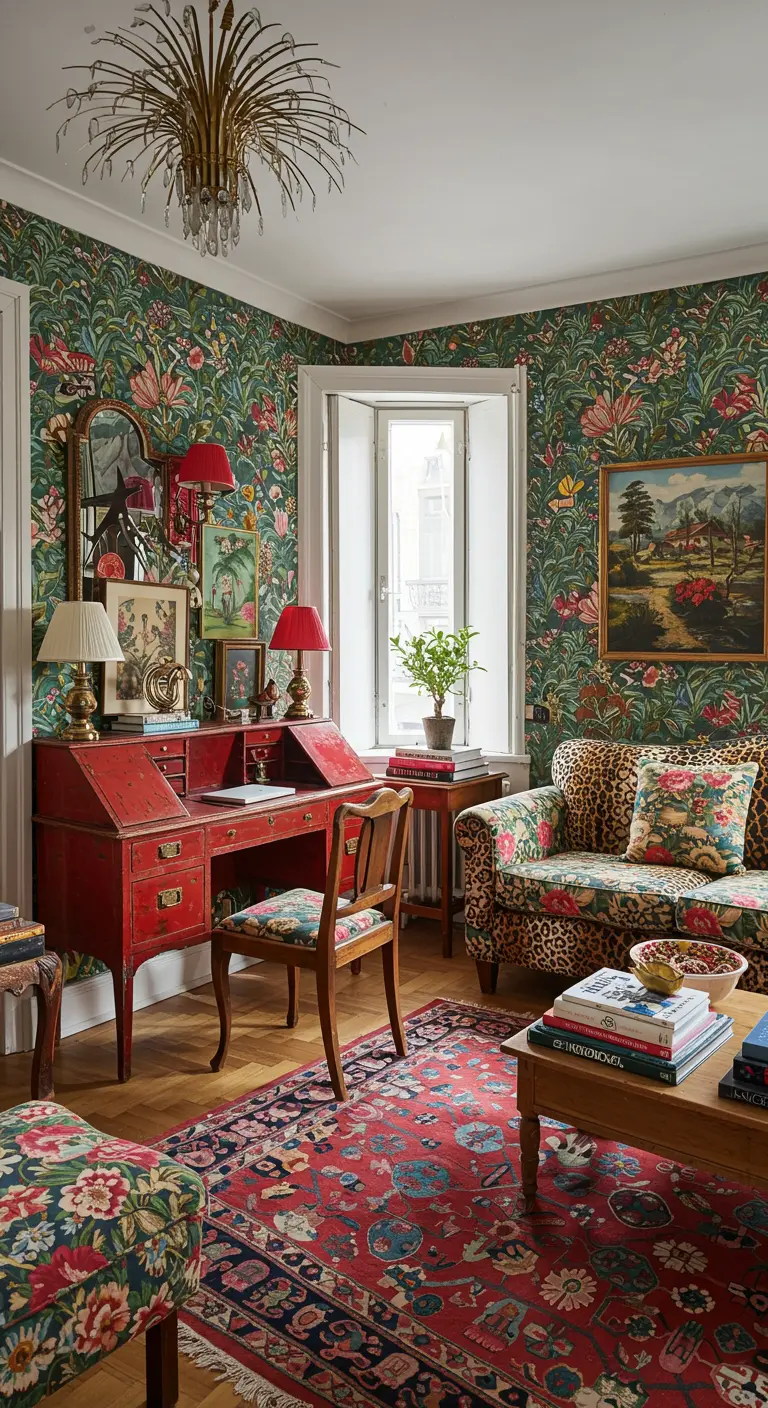
In a maximalist room, a desk doesn’t need to be hidden—it becomes another layer in a rich tapestry of color, pattern, and texture.
Here, a bold red desk is just one element among patterned wallpaper, a leopard-print sofa, and a vibrant oriental rug.
The key to a successful maximalist interior is confidence and cohesion. The patterns and colors are repeated across different pieces, which unites the space.
Your workspace becomes an integral part of the room’s joyful and expressive personality.
16. The Zen Approach: Low-Profile and Grounded

Create a multipurpose room grounded in tranquility by adopting a low-profile, Japanese-inspired design ethos.
A simple floating wood shelf serves as a desk, paired with a low wooden chest for storage instead of a bulky filing cabinet.
The lounge area consists of floor cushions and a low table, which keeps everything at a consistent, calming eye level.
This minimalist approach fosters a sense of peace that is conducive to both focused work and quiet contemplation.
17. The Bedroom Office: Built-In and Cohesive
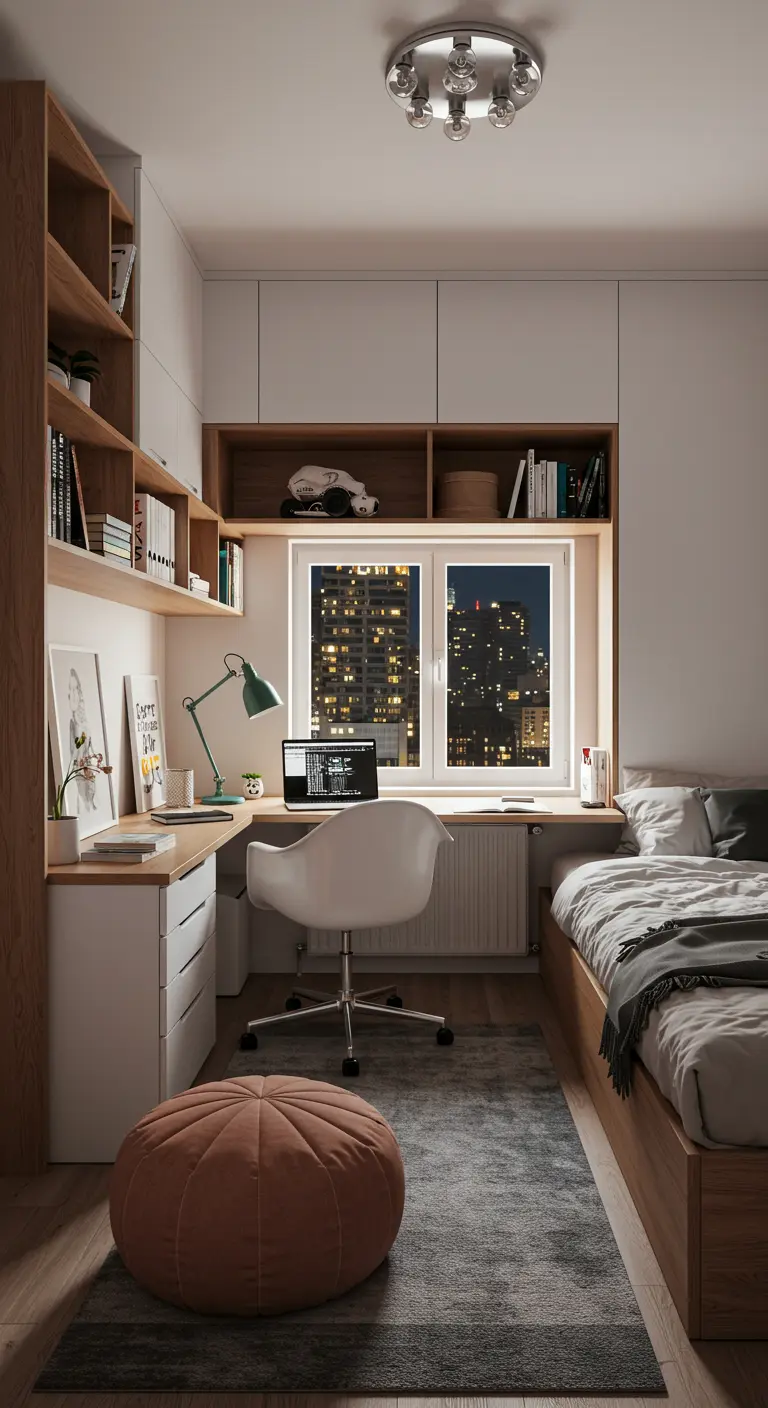
Integrate a workspace into a bedroom by using cohesive, built-in cabinetry that flows from storage to desk to bed frame.
Using the same wood and white finishes throughout makes the desk feel like a natural extension of the room’s architecture, not a separate piece of furniture.
Positioning the desk by a window provides excellent task lighting and a welcome view during the day.
To transition to evening, simply clear the desk surface and switch to softer, ambient lighting, like the bedside lamp.
18. The Modern Farmhouse Fold-Down
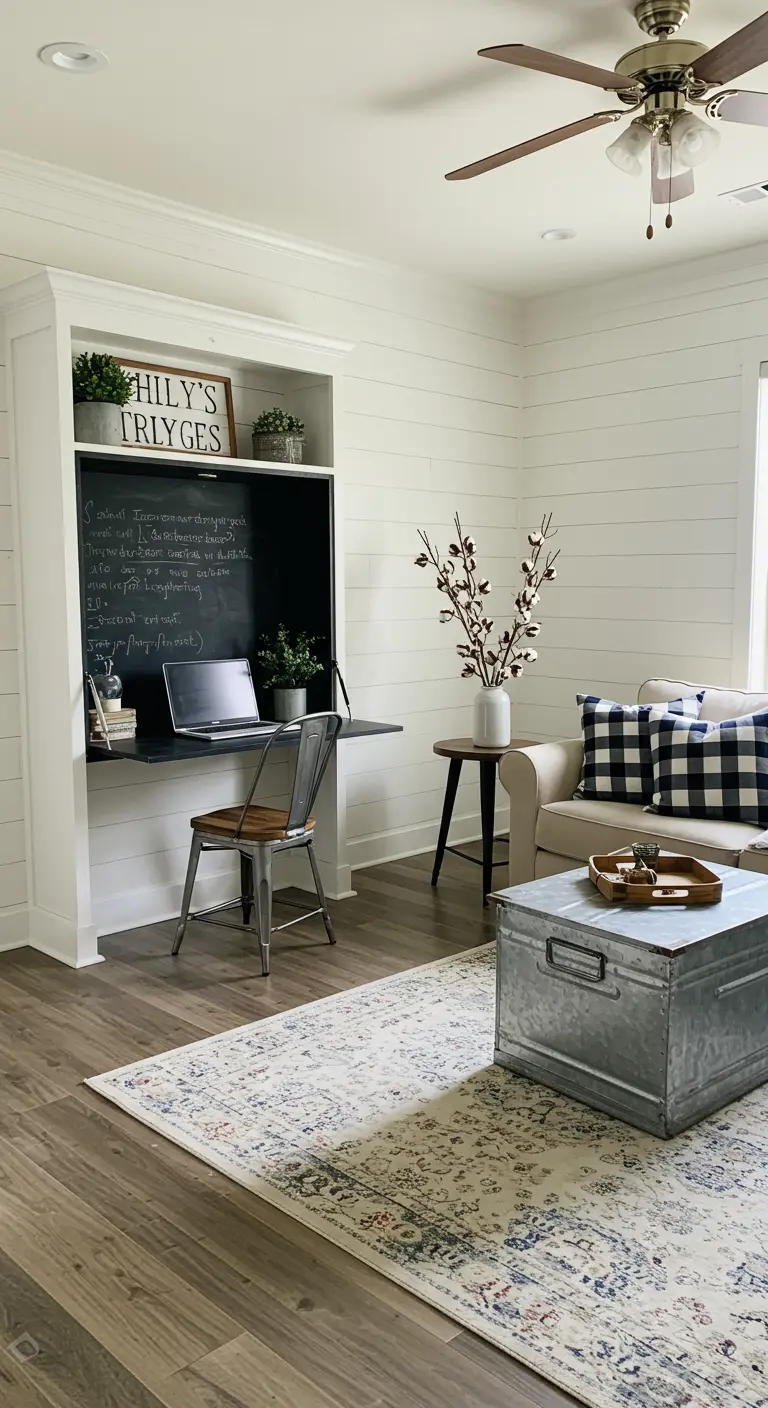
Combine farmhouse charm with modern functionality using a fold-down desk built into a shiplap-style niche.
The chalkboard interior is perfect for notes and inspiration during the workday, and the entire unit can be closed to maintain a tidy living space.
This solution cleverly tucks the office away, preserving the calm, uncluttered feel essential to modern farmhouse style.
The built-in shelving above offers a place for decorative objects, further integrating the unit into the room’s decor.
19. Monochrome Calm: Unifying with a Single Palette

Create a sophisticated and unified multipurpose room by committing to a monochrome color scheme.
Using varying shades of gray, black, and white for the furniture, rug, and walls ensures that the desk area and lounge area feel visually connected.
The slender metal frames of the desk and sofas contribute to a sleek, cohesive look, preventing any single piece from feeling too heavy.
Introducing different textures, like the plush shag rug and soft upholstery, adds depth and warmth to the monochrome palette.
20. The Biophilic Workspace: Bring Nature In

Blur the lines between office and oasis by incorporating a living wall and abundant greenery.
A wall of plants provides a stunning focal point, purifies the air, and creates a calming atmosphere that benefits both work and relaxation.
Simple, natural materials like the wood desk and rattan chair complement the botanical theme and prevent the space from feeling cluttered.
This approach transforms your work area from a place of obligation into a restorative urban jungle.
21. The Bookshelf Divider: Structure without Walls
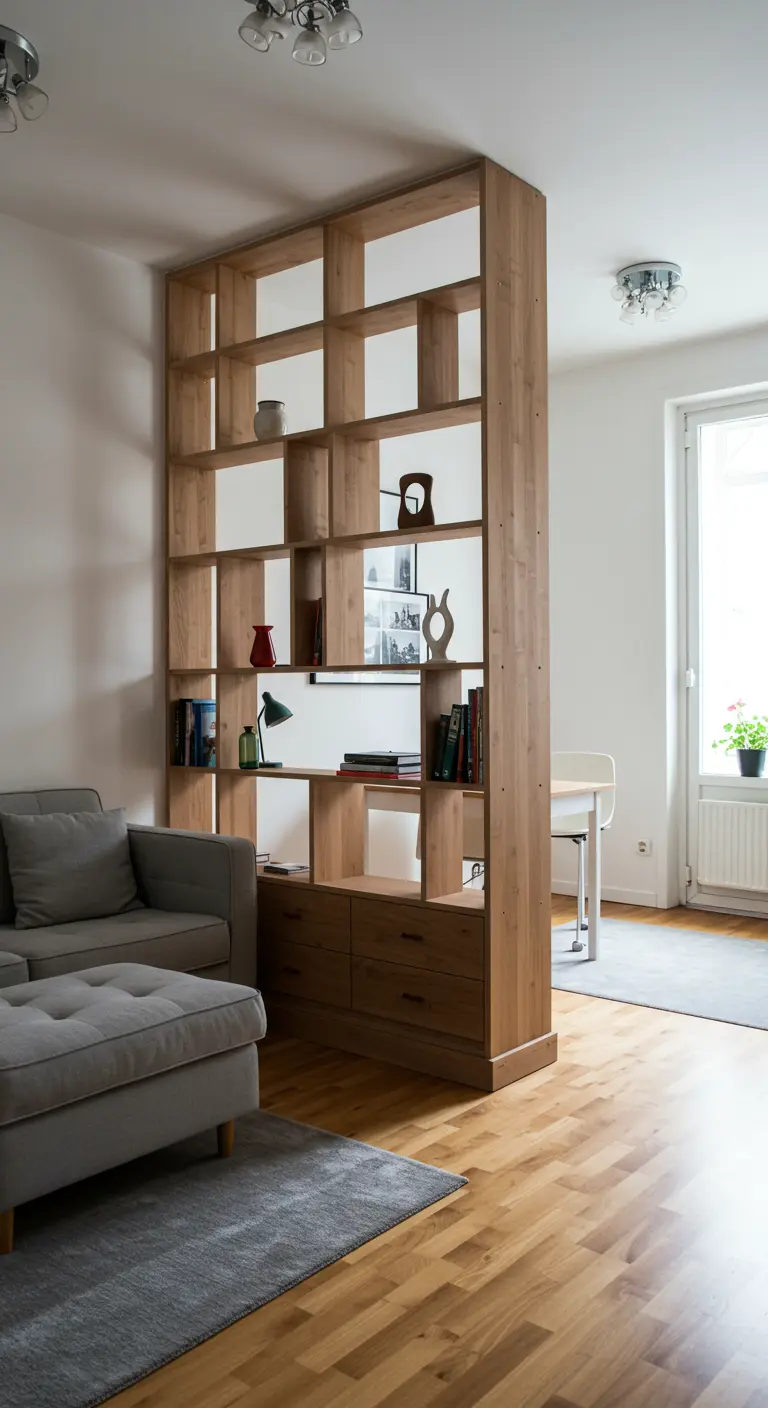
Use a tall, open-backed bookshelf as a room divider to create distinct zones while maintaining a sense of openness and light.
This clever strategy provides essential storage for both office supplies and decorative objects, serving both functions of the space.
The lower drawers offer concealed storage for less attractive items, keeping the visual landscape clean.
Unlike a solid wall, this type of divider allows light to pass through and preserves sightlines, making it an ideal solution for small spaces.
22. Parisian Elegance: The Desk as a Decorative Vignette
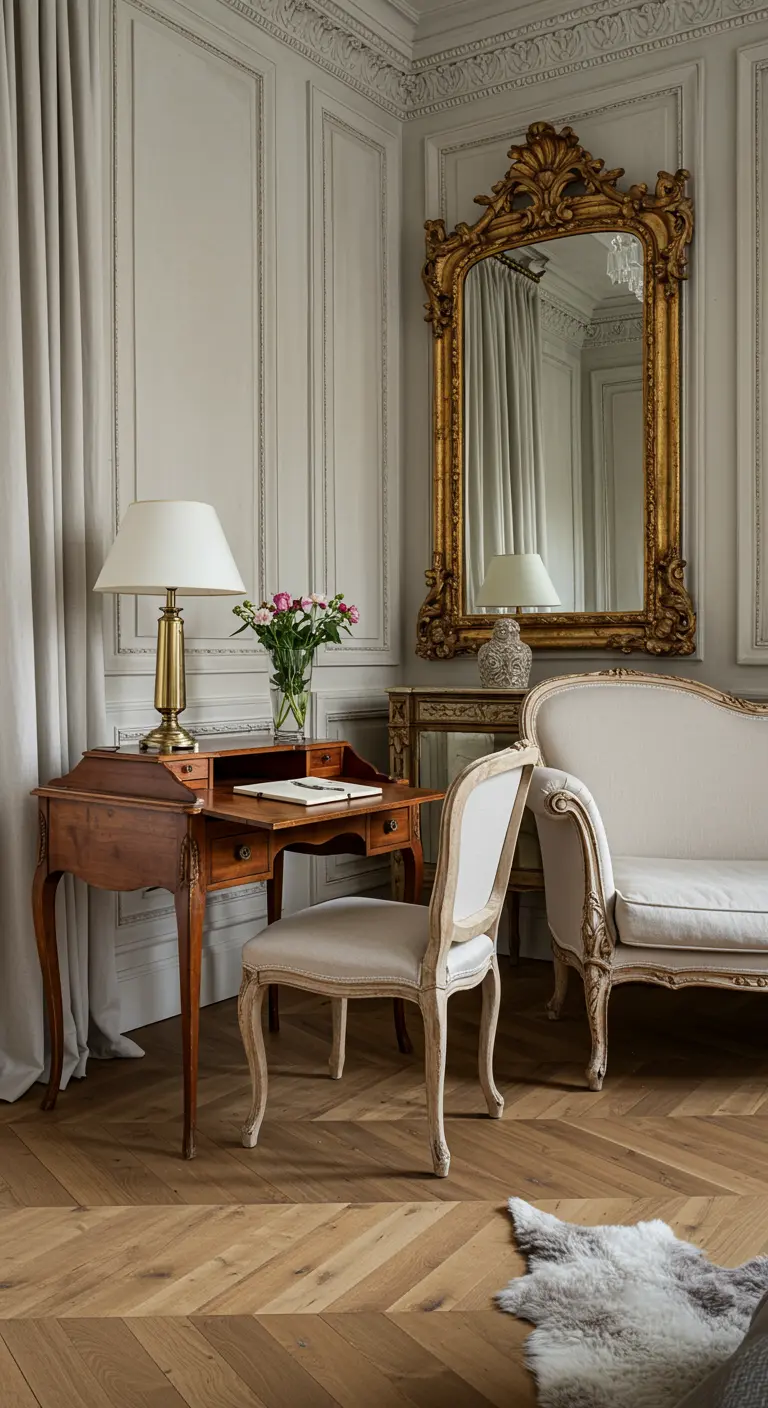
Integrate a workspace into a classic interior by treating the desk as an elegant decorative vignette.
Choose a beautiful antique secretary or writing desk that complements the room’s architectural details, such as ornate wall moulding and herringbone floors.
Pair it with a refined chair and an elegant lamp, and keep the surface styled with fresh flowers and beautiful objects.
This ensures the desk reads as a thoughtful part of the Parisian-style decor, not just a functional station.
23. Layered Lighting for a Smooth Transition
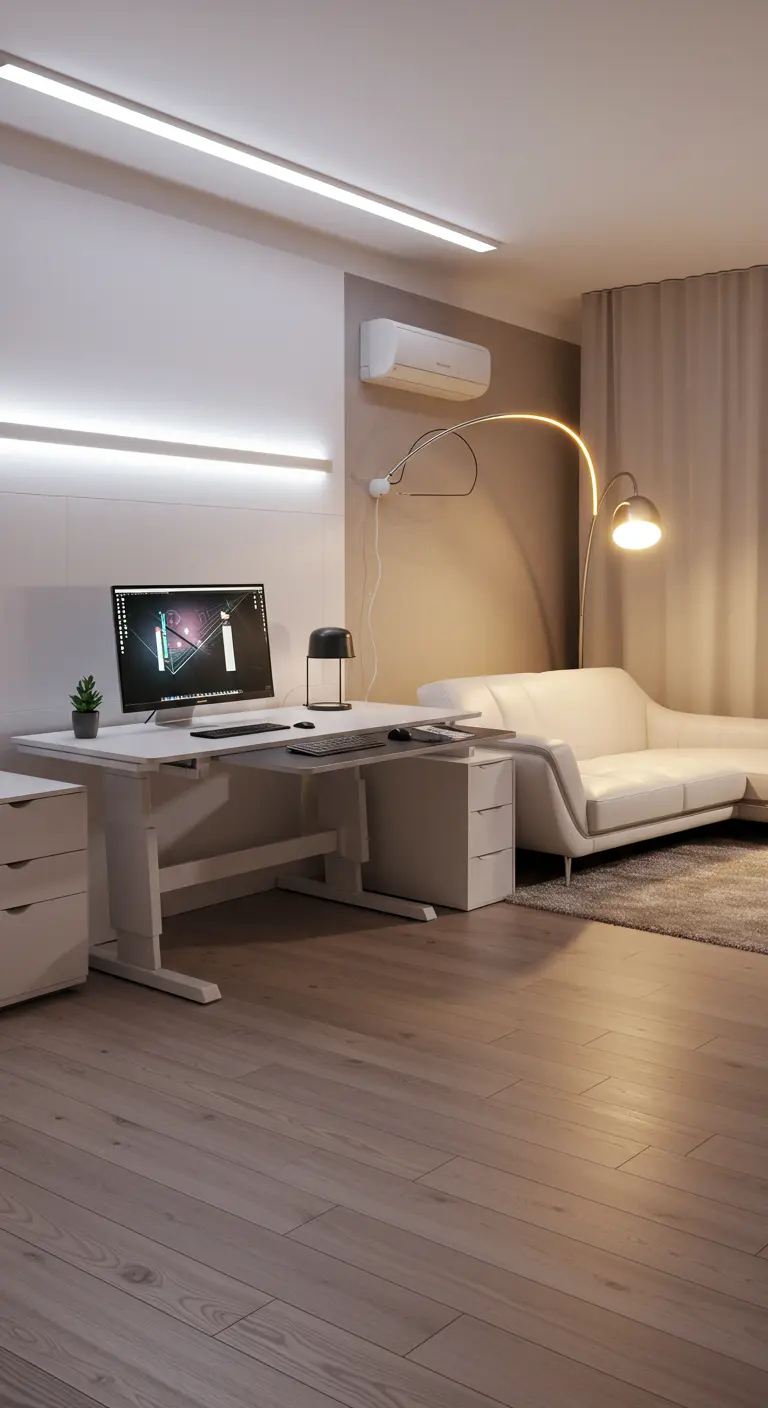
Use a layered lighting strategy to help your room transition from a bright workspace to a cozy lounge.
For work, use bright, focused overhead linear lighting. For relaxation, switch to warmer, indirect ambient light from a floor lamp or wall-mounted fixtures.
A height-adjustable desk adds another layer of flexibility, allowing you to create the most ergonomic setup for work.
This focus on adaptable lighting is key to changing the mood and function of the room with the flip of a switch.
24. The Murphy Bed Solution: The Ultimate Transformation
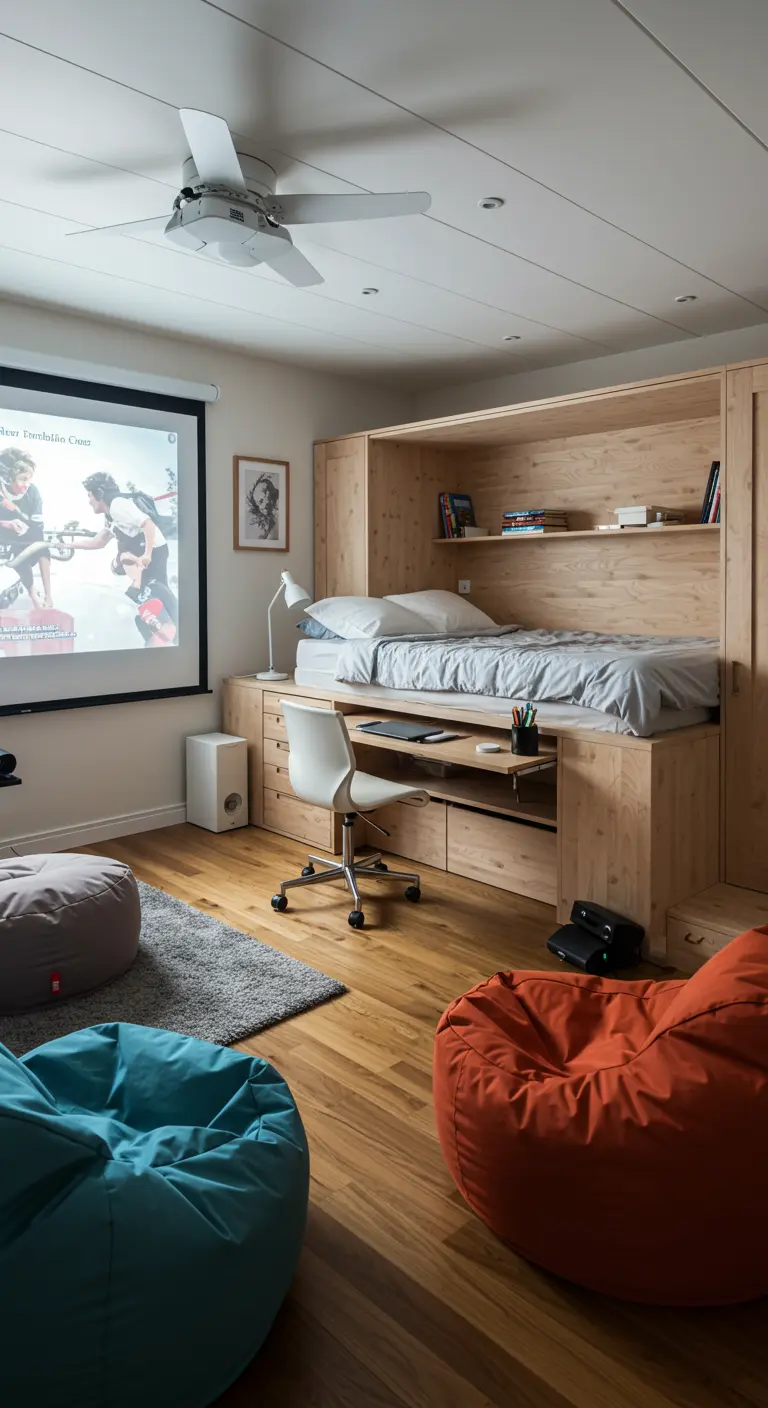
For the ultimate dual-purpose room, especially in a studio or guest room, combine a desk with a Murphy bed.
Modern systems often have an integrated desk that cleverly folds away or remains level as the bed is lowered, so you don’t even have to clear it off.
This allows a single room to function as a fully-fledged office by day and a comfortable bedroom or media lounge by night.
When combined with a projector screen, it becomes the perfect space for both productivity and entertainment.
25. Color Blocking for Visual Definition

Use color blocking to visually define the workspace within a larger room without adding any physical barriers.
Painting a section of the wall behind the desk a warm, earthy tone clearly demarcates the office zone from the lighter-colored lounge area.
A floating shelf within the colored block adds storage while maintaining the clean lines.
This design trick is a simple yet powerful way to create the feeling of separate rooms within a single open space, perfect for desert-inspired interiors.
26. The Nomadic Workstation: The C-Table Solution

If you only need a temporary workspace, a C-table is an incredibly versatile and stylish solution.
It slides neatly over the arm or seat of your sofa, providing a stable surface for a laptop without requiring a dedicated desk.
When your work is done, it functions as a chic side table for a drink, a book, or a small plant.
This non-committal approach keeps your living room feeling like a lounge first and foremost, with a workspace that appears only when needed.
27. The Modern Secretary: Concealed and Composed
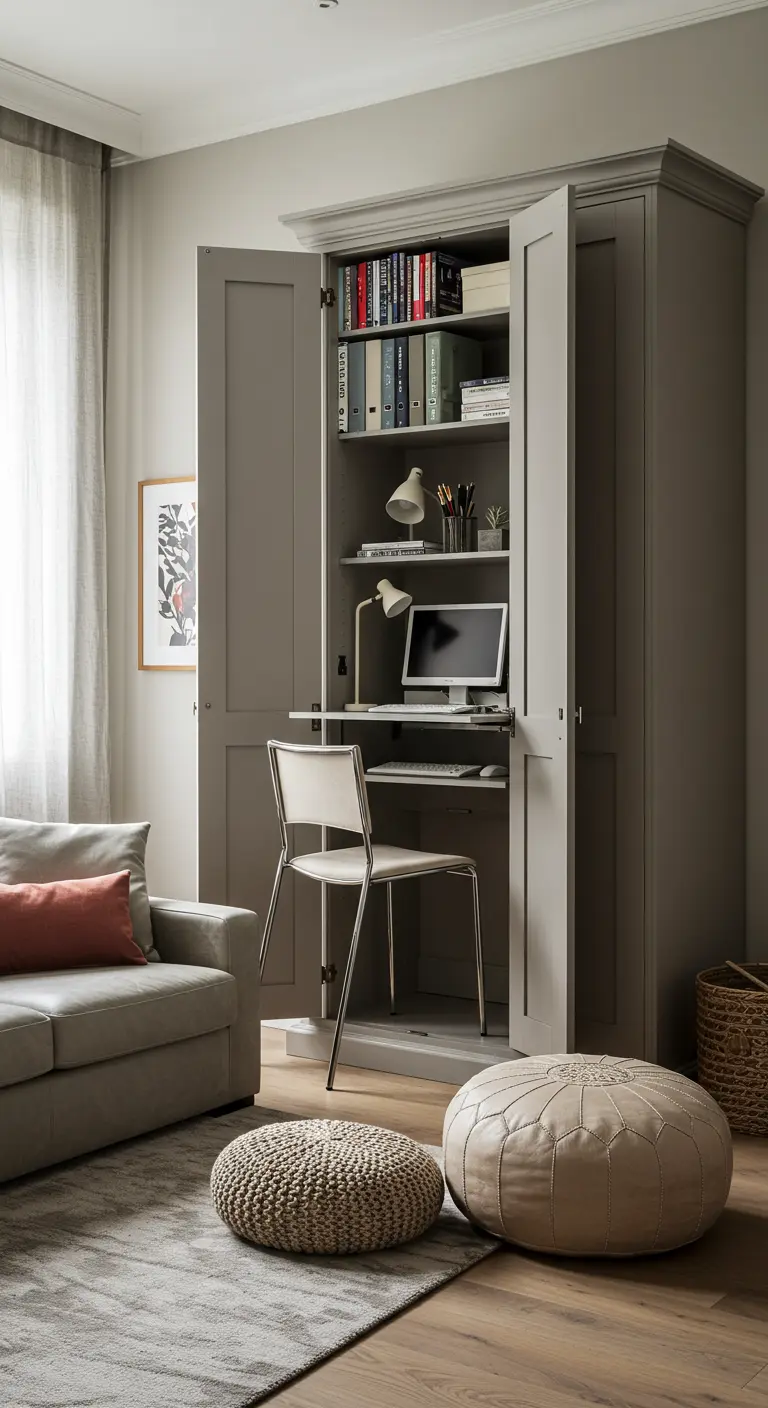
A modern interpretation of the secretary desk, housed within a tall cabinet, provides a clean and contained workspace.
The pull-out shelf offers a generous desk surface, while integrated shelving keeps essentials organized and within reach.
Like a traditional armoire office, this solution allows you to completely hide your work by closing the doors.
The calm, neutral gray color helps this substantial piece blend quietly into the room’s serene decor, complemented by soft textiles like the woven poufs.
28. Immerse in Texture: The Maximalist Lounge
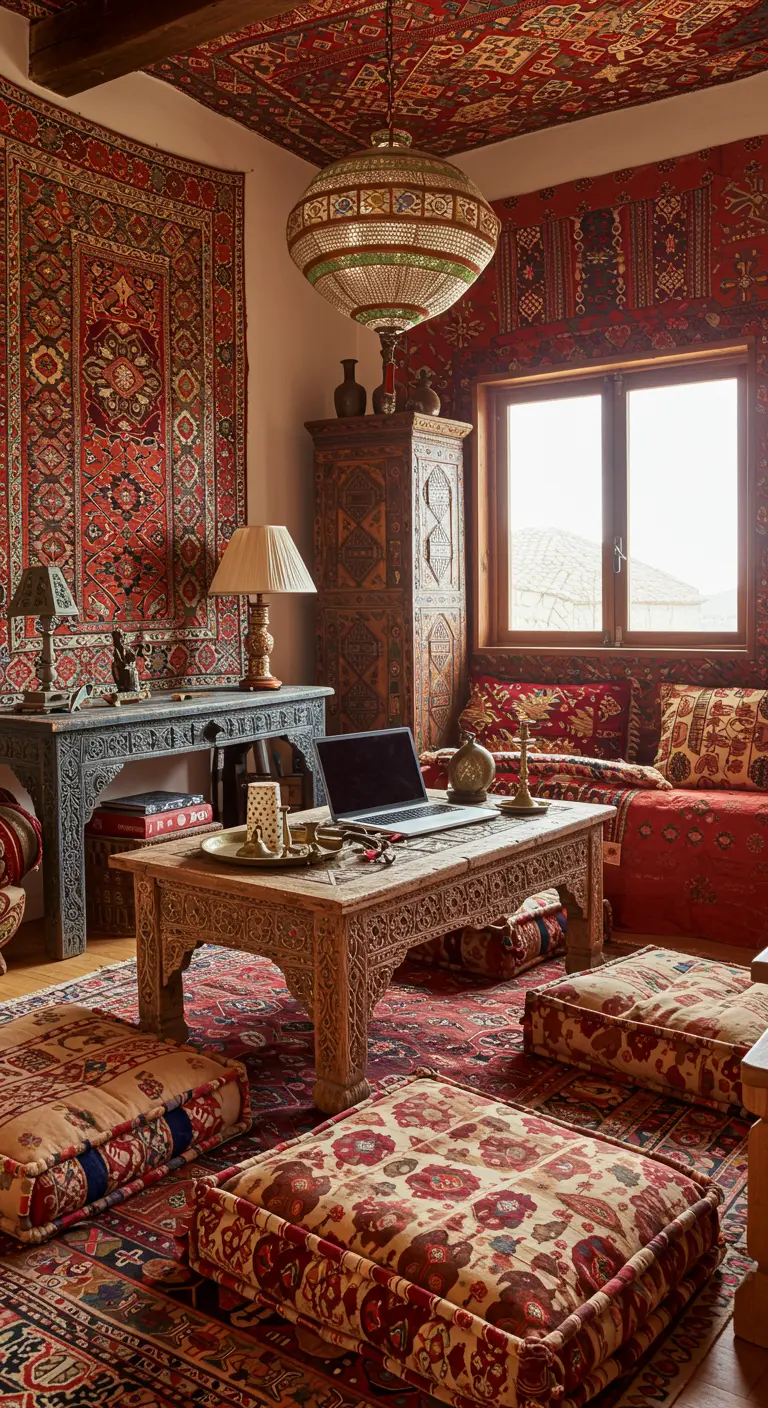
Create a multipurpose space that prioritizes comfort and sensory experience by embracing a floor-level, maximalist lounge concept.
Layer patterned rugs and floor cushions to create an inviting sea of texture, where a low coffee table can easily serve as a surface for a laptop.
In this style, ornate, carved wooden furniture and rich textiles blur the lines between different functions.
The entire room becomes a flexible space for working, lounging, and socializing, defined by comfort rather than by specific furniture pieces.
29. The Monochromatic Immersion
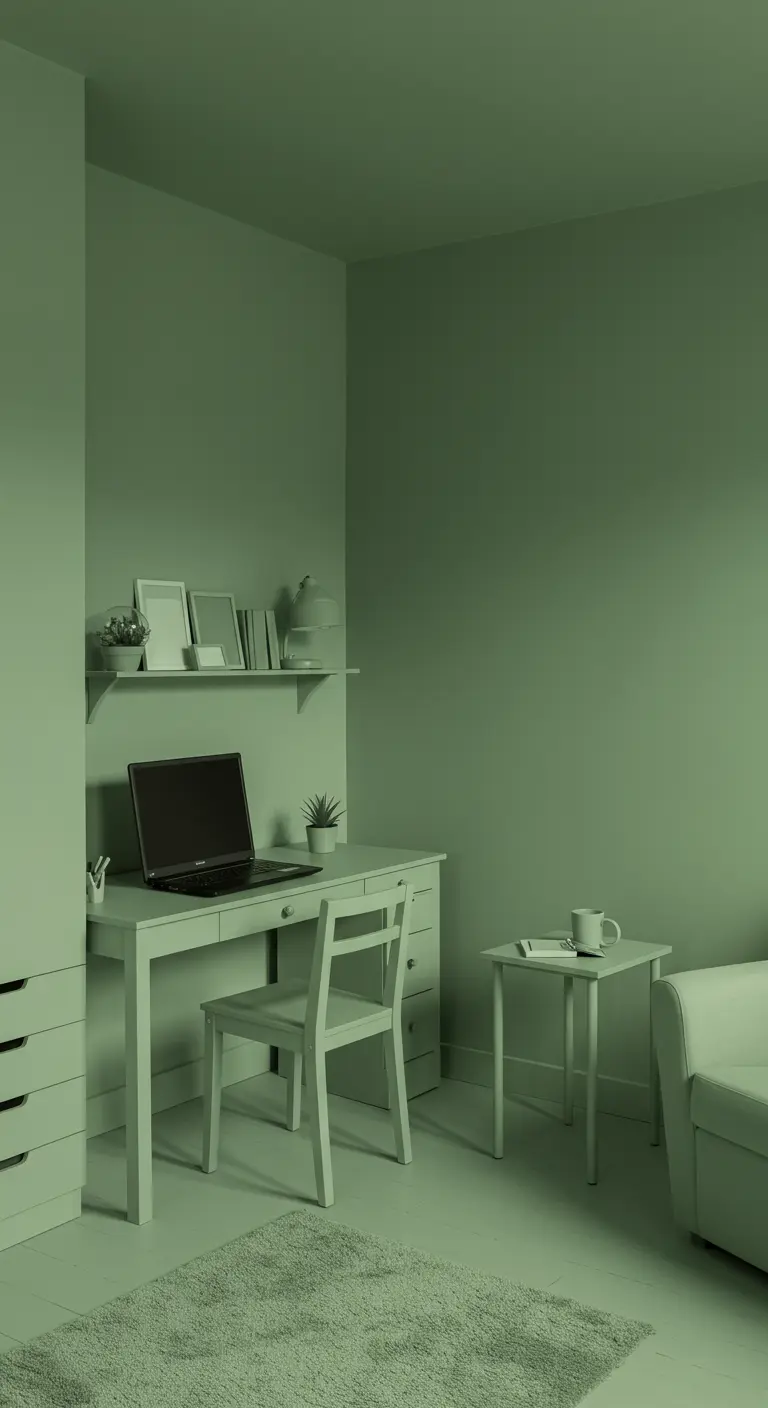
Paint your entire room—walls, furniture, and even shelving—in a single, unified color for a bold and immersive effect.
This technique, known as color drenching, minimizes visual clutter and makes distinct pieces like a desk and chair feel like part of a cohesive whole.
The lack of contrast creates a deeply calming and sophisticated atmosphere where the transition from work to relaxation feels effortless.
A soft, nature-inspired sage green is a perfect choice, promoting both focus and tranquility.
30. Embrace the Industrial Loft Aesthetic
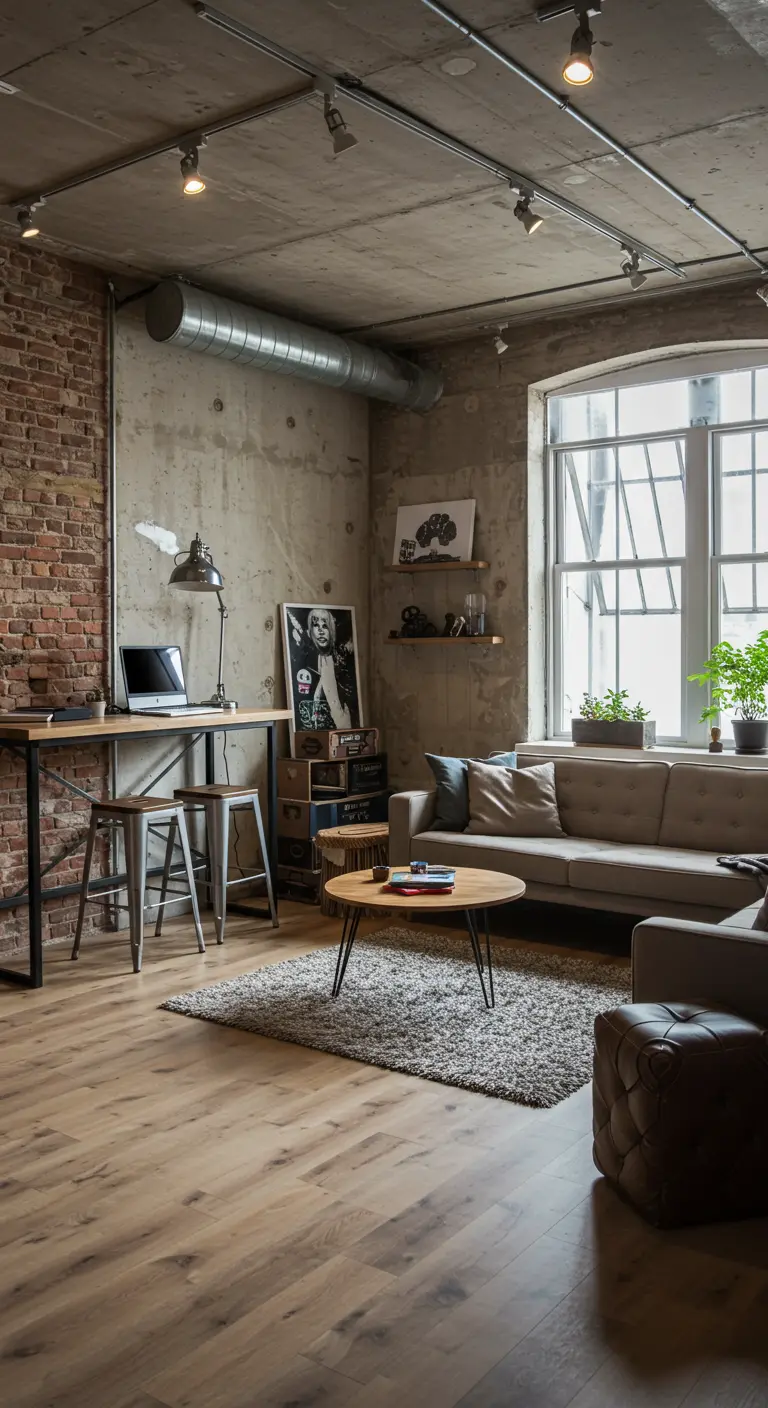
In a space with strong architectural features like brick walls and exposed ductwork, let the desk be part of the industrial character.
A simple wood-and-metal desk echoes the room’s raw materials, making it feel like a natural fit rather than an afterthought.
Use track lighting to provide flexible, focused light over both the work area and the lounge space.
This aesthetic celebrates function, so a clearly visible workspace feels authentic to the industrial loft style.
31. The Mobile Desk Cart: Work and Serve in Style
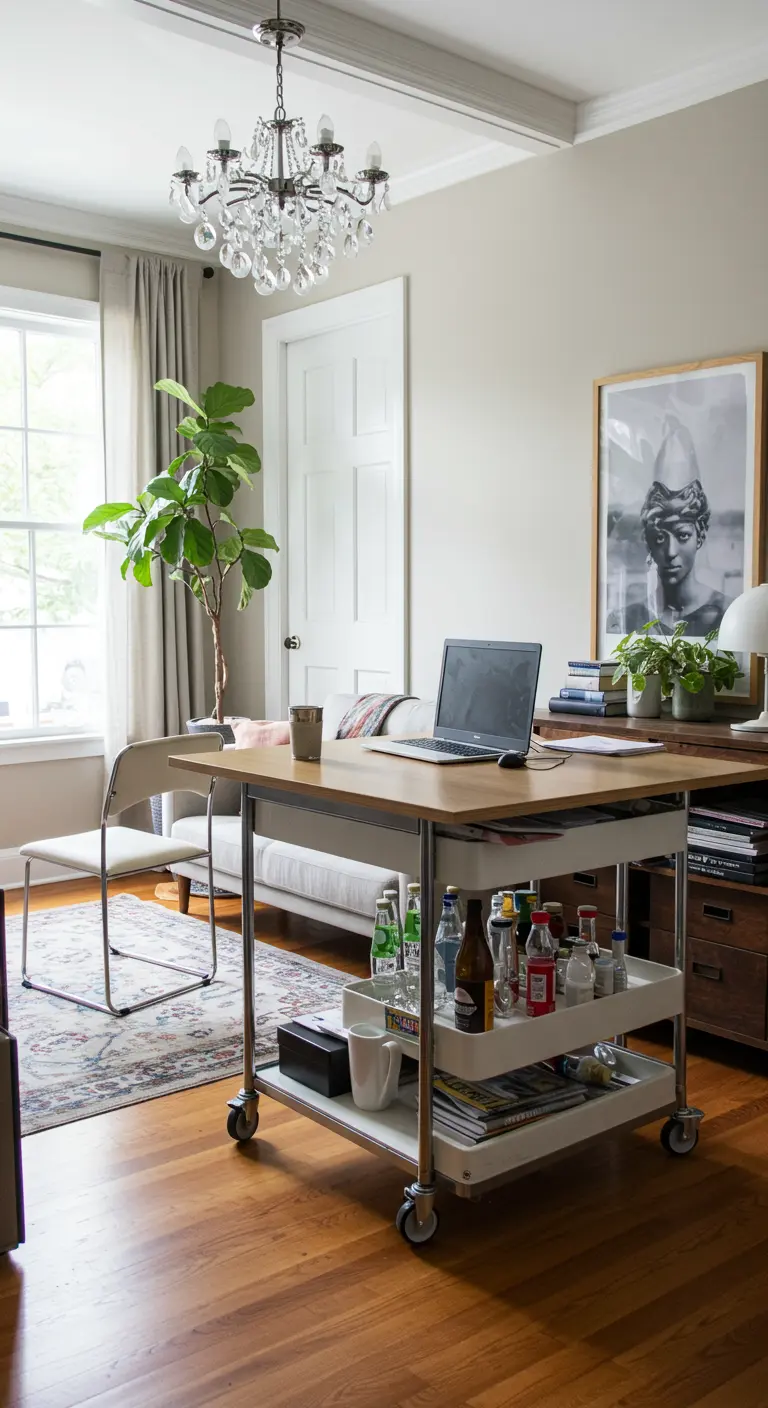
Use a rolling utility cart as a mobile desk that can be easily repurposed as a bar cart for evenings or entertaining.
Its multi-tiered shelves provide ample space for a laptop and office supplies during the day.
Once work is over, clear the top surface and stock the lower shelves with glassware and drinks to transition it into a serving station.
This highly practical piece offers ultimate flexibility and is a perfect fit for a room that needs to adapt quickly to different needs.
32. The Alcove Office: A Room within a Room
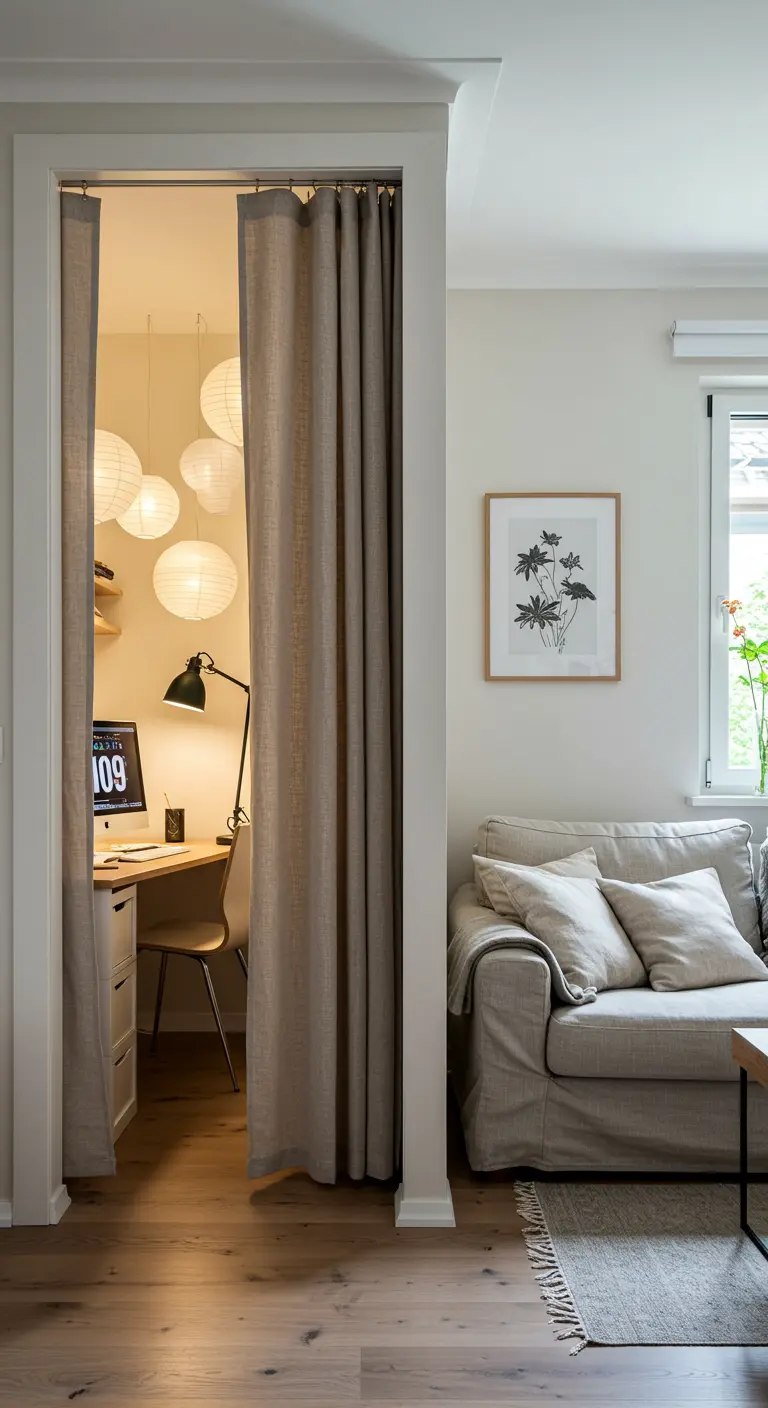
If you have an unused closet or a small alcove, transform it into a dedicated micro-office.
Install a simple desktop and shelving, and use a curtain as a soft, inexpensive door to conceal the space when not in use.
Hanging a cluster of paper lanterns inside creates a charming and well-lit workspace that feels separate from the main room.
This is an excellent way to add a home office without sacrificing any floor space in your living area, similar to some ideas for under-the-stairs nooks.
33. The Ladder Desk: Vertical Style, Minimal Footprint
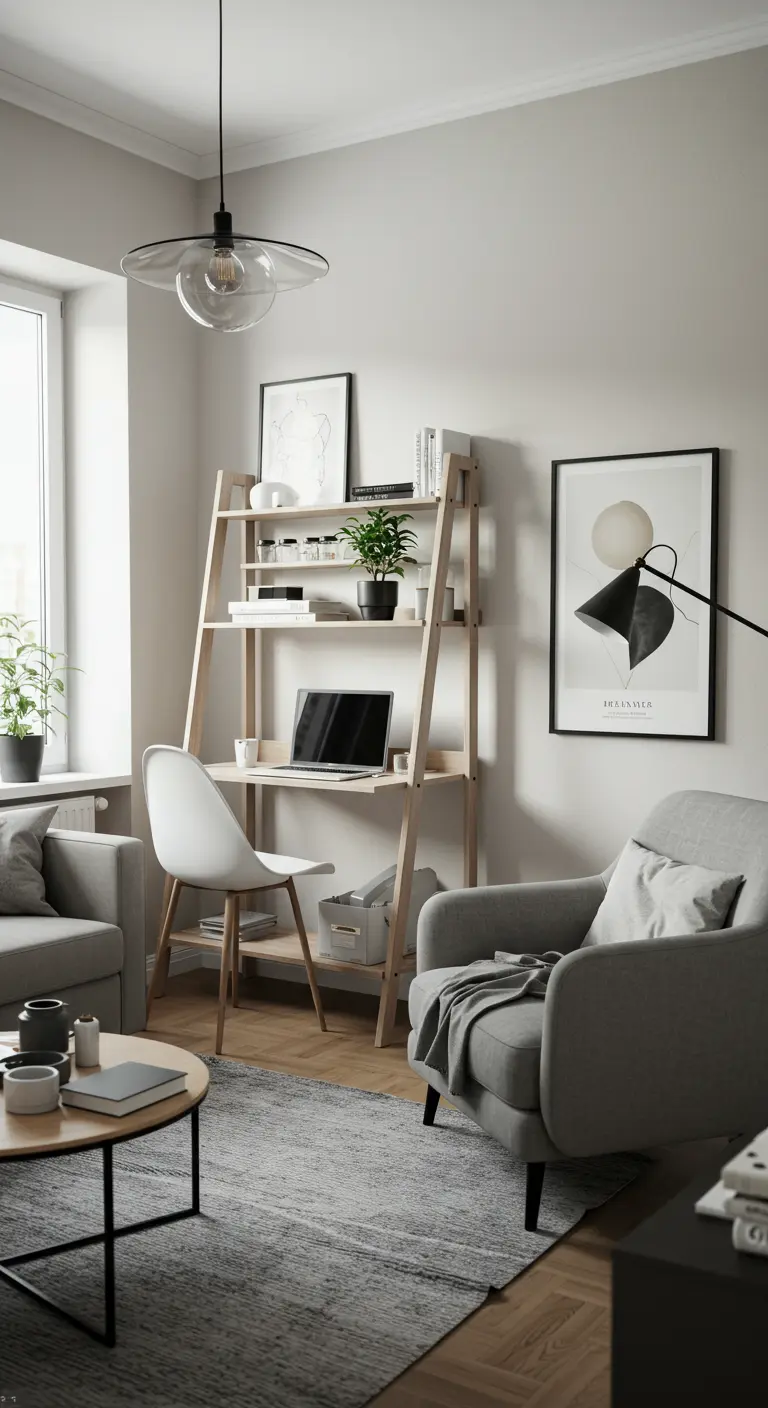
A leaning ladder-style desk offers the perfect balance of form and function for a multipurpose room.
It provides vertical storage without the visual bulk of a traditional desk and bookcase, keeping the feel light and airy.
Its design inherently blends with casual living room decor, looking more like a stylish shelving unit than a piece of office furniture.
Pair it with other pieces from chic Scandinavian interiors to create a space that is effortlessly cool and highly functional.
